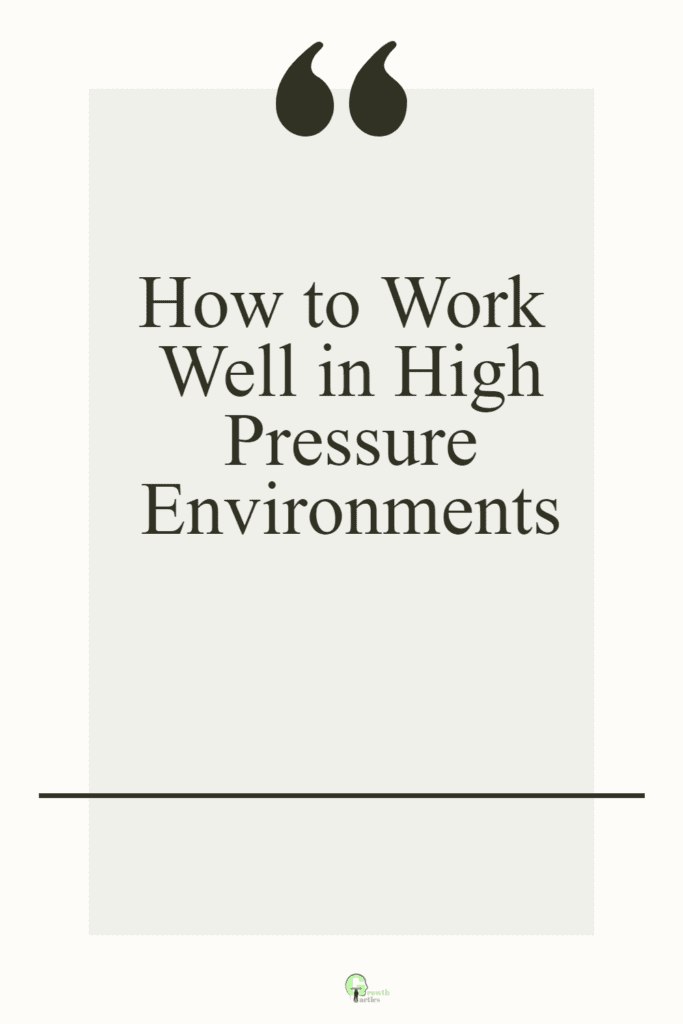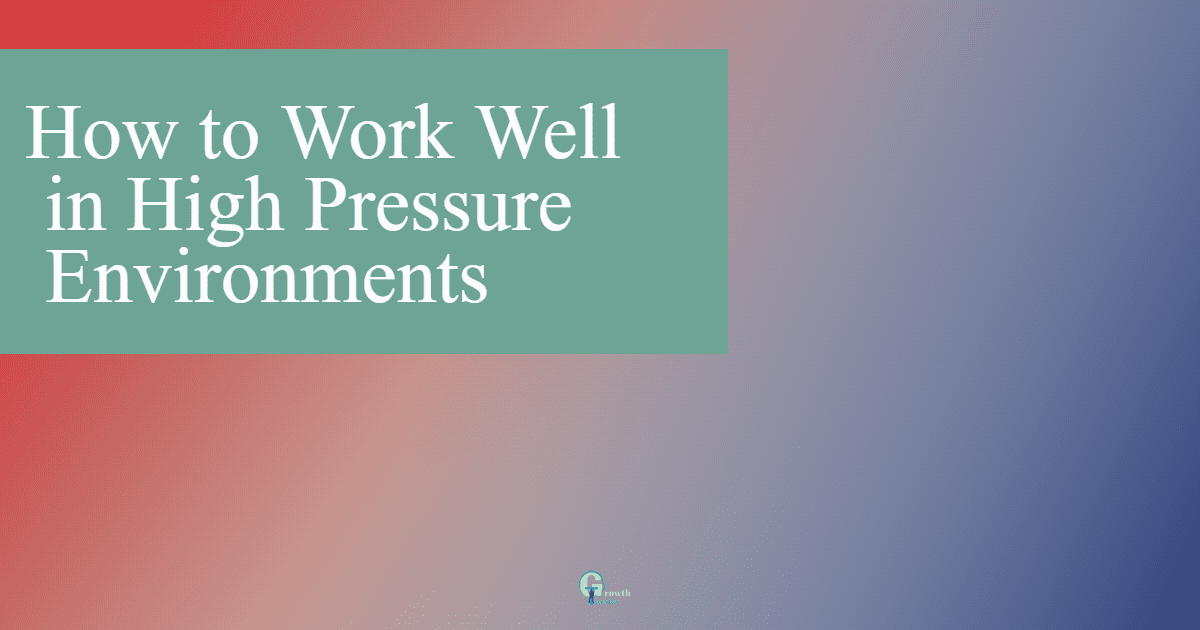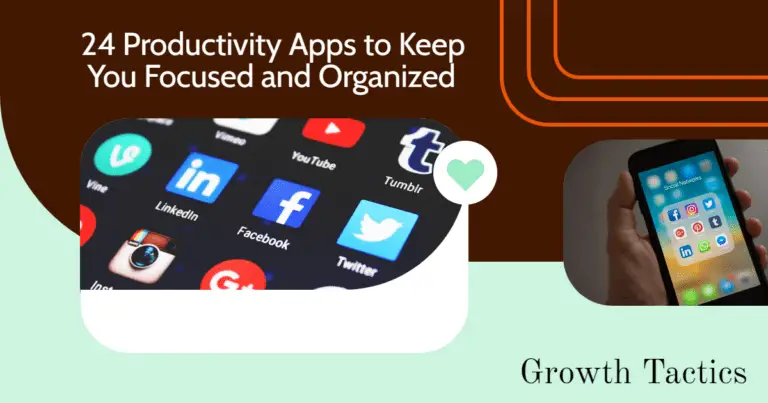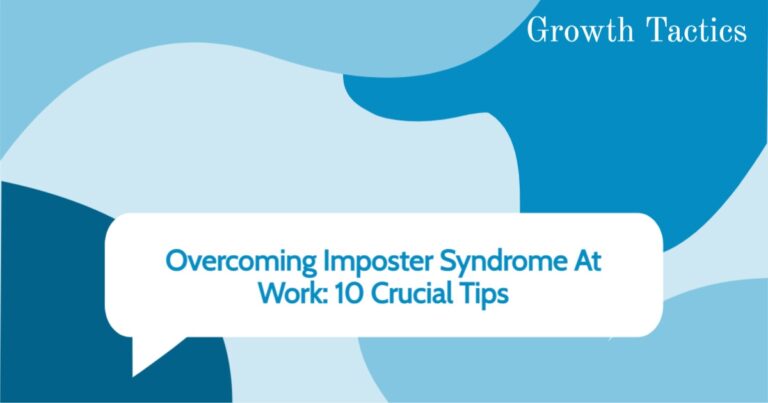In the fast-paced and ever-evolving business world, the ability to work under pressure is a skill in high demand. The capacity to maintain high-quality work while navigating high-pressure situations can differentiate an average employee from an excellent one.
This article delves into practical methods for effectively handling pressure to elevate your productivity, prioritize tasks wisely, manage stress, and enhance team dynamics. Crucial aspects for excelling in a high-pressure work environment.
Jump To Section
How to Effectively Work Under Pressure
Work environments often include high-pressure situations that demand effective decisions and perfect task execution under looming deadlines. It’s essential to be familiar with how to work under pressure while still delivering your best work.
Prioritizing Tasks to Meet Deadlines
One of the hallmark abilities of an individual who performs well in a high-pressure work environment is knowing how to prioritize tasks. An elevated level of pressure often is associated with tight deadlines. Prioritizing responsibilities can help you focus on tasks that are of high importance first, leading to more efficient time management and effective meeting of deadlines.
Managing Stress in a High-Pressure Work Environment
Stress is an inevitable part of a high-pressure work environment. Knowing how to manage stress is a valuable tool to keep productivity levels high while ensuring good physical and mental health. Techniques like taking short breaks, physical exercise, clear-your-mind exercises, and maintaining a healthy lifestyle can help desensitize the impact of stress at work.
Developing Work Under Pressure Skills and Abilities
Adaptability, quick decision-making, resilience, and robust problem-solving abilities are crucial work under-pressure skills. Developing these soft skills can help individuals navigate through unexpectedly challenging situations. Training, simulations, and practice can dramatically improve one’s ability to work effectively under pressure.
Working Well Under Pressure as a Team Member
High-pressure situations often entail team projects where members need to demonstrate their work under pressure abilities. Trusting your team, working in harmony, and understanding others’ work styles can significantly reduce the overall pressure and improve the team’s ability to meet deadlines and deliver quality work.
Achievements and Activities That Help Handle Pressure
Activities such as sports, stress-relief hobbies, or any pursuits that regularly expose you to pressure help build resistance to stress and enhance your capacity to work well under pressure. Such activities can also be mentioned in your achievements section to showcase your readiness to handle high-pressure situations. Remember, pressure is a valuable part of professional growth when handled wisely.
How to Cope with Stress at Work?
Navigating stress, particularly at work, can feel like a herculean task, especially when there is a constant influx of deadlines and responsibilities. However, understanding how to manage and cope with this stress can turn the herculean task into a stepping stone for professional growth.
Embracing and Managing the High-Pressure Environment
Every high-pressure situation presents an opportunity to develop stamina and resilience. Embrace these moments as personal challenges and focus on the tasks at hand, rather than the pressure itself. Tools such as positive reinforcements, affirmations, and constructive self-talk can help shift your perspective from viewing pressure as a threat to seeing it as a challenge to overcome.
Taking a Step Back to Handle Stress Levels Effectively
Pressure can often make us feel cornered, pushing us to act hastily. Such moments call for taking a step back, both physically and mentally. Short breaks can alleviate stress, restore focus and offer a fresh perspective. Mindfulness practices can aid in calming your mind, equipping you with better decision-making capabilities and overall stress management.
Time Management Techniques for High-Pressure Situations
Mastering the art of time management can be a solid defense mechanism against work-related stress. Use tools and techniques of prioritization like Eisenhower’s Matrix, the ABCDE method, or the Ivy Lee method. Efficiently structuring your work time helps in minimizing the feelings of being overwhelmed and enhances productivity.
Maintaining High-Quality Work Under Pressure
Quality is as important as efficiency when working under pressure. To ensure the former isn’t compromised for the latter, familiarize yourself with your peak productivity hours and try to fit your most significant tasks into that window. Regular self-checks and revisions also help maintain work quality without succumbing to the surrounding pressure.
Leveraging Pressure as a Valuable Motivator in Work-Related Achievements
Remember, pressure is not synonymous with stress. While stress tends to hinder progress, pressure can be used proactively to aid your motivation and drive your achievements. Reframe the narrative around pressure to leverage it as a motivating catalyst rather than a hindrance. This mental shift can transform your approach towards high-pressure situations, leading to personal and professional growth through improved performance and innovation.
How to Handle High-Pressure Situations?
Strong performance under high-pressure situations can set the course for career progression and personal development. It is important not only to survive but also to thrive under pressure. Here are some strategies to stay balanced and efficient when the pressure starts to build.
Developing the Ability to Work Well Under Pressure
To develop the ability to work under pressure, start by changing your mindset. View high-pressure situations as opportunities rather than challenges. This mental shift can help you see things from a more positive outlook and decrease the feelings of being overwhelmed. Remember that practice makes perfect; the more you train yourself to handle pressure, the better you become at it.
Techniques to Work Under Pressure with More Efficiency
Maintaining efficiency in high-pressure situations is crucial for professional growth. Grasping and implementing the right techniques can make a significant difference. Here, we provide a detailed expansion on these techniques:
Creating a Task List
A task list can help break your tasks into small, manageable components. This provides clarity regarding which tasks need to be tackled first and aids in maintaining a steady workflow. Document your tasks, create timelines for their completion, and continuously monitor your progress.
Setting Realistic Goals
When working under pressure, establishing achievable and realistic goals can be the key to maintaining focus and motivation. Provide yourself with clear and specific targets that can be reached within designated timeframes. Keep in mind the SMART criteria (Specific, Measurable, Achievable, Realistic, Time-bound) when setting these goals.
Prioritizing Tasks as Per Deadlines
Recognize the distinction between urgent and important tasks. Prioritize tasks based on their deadlines, as well as the consequences of not completing them on time. You can utilize tools like Eisenhower’s Matrix to categorize tasks into quadrants based on urgency and importance, resulting in a more organized approach.
Using Productivity Tools
Several productivity tools, such as Trello, Asana, and Todoist, can help you stay organized and efficient. Many of these tools allow for task assignments, progress monitoring, and collaborative work. Choose a tool that best fits your work needs and personal preferences.
Maintaining a Steady Workflow
Avoid multitasking and commit fully to a single task at a time. Break work sessions into focused intervals using techniques like the Pomodoro Technique, which can boost productivity and prevent mental burnout.
Navigating Distractions and Staying Focused
Distractions are inevitable, but handling them effectively is the key to maintaining efficiency under pressure. Control your environment by minimizing distractions (e.g., keeping your phone on silent, or using noise-canceling headphones), and establish clear boundaries with colleagues or family members.
Remember, developing the ability to work efficiently under pressure is a gradual process, and it takes time and practice. Implement these techniques consistently and adjust them based on what works best for you. Over time, you will notice significant improvements in your ability to perform under high-pressure situations.
Strategies to Handle The Workload in a High-Pressure Environment
Understanding your workload and planning ahead play crucial roles in managing high-pressure situations. Breaking large tasks into smaller, manageable parts can make them seem less daunting. Also, identifying peak productivity hours and utilizing them for substantial work can help reduce the stress associated with a heavy workload.
Managing Stress and Maintaining Optimal Performance
Maintaining optimal performance while under pressure often requires effective stress management. Incorporating stress management techniques like deep breathing exercises, yoga, meditation, or any physical activity into your daily routine can significantly help to keep stress levels in check and performance at their peak.
Balancing the Level of Pressure to Perform at Your Best
To perform at your best, it is essential to strike a balance between periods of heightened pressure and moments of calm. This helps you stay focused while avoiding burnout, eventually leading to sustainable growth. Here are some ways to find the right balance in the face of pressure:
Understanding Your Personal Capabilities
Becoming self-aware of your strengths, weaknesses, and limitations is key to identifying your optimal pressure levels. Reflect on past experiences where you performed well under pressure and those that resulted in burnout. Recognize the signs of stress and develop healthy coping strategies to determine the right level of pressure for you.
Setting Boundaries
Establish boundaries to protect your workload and ensure you don’t overcommit, resulting in excessive pressure. This may involve politely declining a task or negotiating deadlines with your manager. Assess the workload before accepting additional responsibilities, and maintain open communication with your team about your limits.
Create a Support System
Develop connections with co-workers and create an environment where you can share experiences, learn from each other, and help out during high-pressure situations. A strong support system enhances your ability to cope with pressure and maintain performance without having to shoulder the burden alone.
Scheduling Time for Relaxation and Recovery
Balancing pressure with recovery can be achieved by scheduling regular breaks, days off, or vacations to rejuvenate and recharge. Utilize relaxation techniques, such as meditation, deep breathing exercises, or leisurely walks throughout your day to reduce stress and maintain focus.
Developing Time Management and Prioritization Skills
Distribute your work hours wisely to maintain a balanced pressure level. Prioritize tasks according to urgency and importance, and allocate appropriate time for them. Effective time management helps mitigate stress while maximizing efficiency.
Learning From Mistakes
When you experience moments of burnout or pressure-induced setbacks, use them as learning opportunities. Reflect on what went wrong, seek constructive feedback, and implement changes to optimize your work process and better handle future pressure.
Ultimately, handling high-pressure situations involves a mix of strategic planning, stress management, time management, personal awareness, and resilience. With these tools in your arsenal, you can navigate pressure-filled scenarios effectively – and even thrive in them.
How to Recover After Intense Periods of High-Pressure Work
After navigating through high-pressure work environments, it’s crucial to focus on recovery to maintain long-term productivity and well-being. Here are some strategies to help you bounce back:
Prioritize Rest and Sleep
Give your body and mind the opportunity to recharge. Ensure you’re getting adequate sleep and consider taking short power naps if needed. Quality rest is essential for cognitive function and stress recovery.
Practice Mindfulness and Relaxation Techniques
Engage in activities that help you unwind mentally. This could include meditation, deep breathing exercises, or yoga. These practices can help reduce stress hormones and promote a sense of calm.
Engage in Physical Activity
Exercise is a powerful stress-buster. Whether it’s a workout at the gym, a jog in the park, or a relaxing walk, physical activity can help release endorphins and improve your overall mood.
Reconnect with Personal Interests
Spend time on hobbies or activities you enjoy outside of work. This can help you maintain a healthy work-life balance and remind you of your identity beyond your professional role.
Reflect and Learn
Take time to reflect on the high-pressure period. What worked well? What could be improved? Use these insights to better prepare for future high-pressure situations and to refine your stress management techniques.
Seek Social Support
Connect with friends, family, or colleagues. Sharing your experiences and feelings can provide emotional relief and potentially offer new perspectives on handling work pressure.
By implementing these recovery strategies, you can better prepare yourself for future high-pressure work situations while maintaining your overall well-being and productivity.
Conclusion
Handling high-pressure situations efficiently and achieving a balance in pressure levels are key attributes that contribute to personal and professional growth. By implementing strategic planning, adopting suitable stress management and time management techniques, and staying aware of personal capabilities, you can turn pressure from a source of stress into a driving force for productivity and innovation.
Remember, the goal is not to avoid pressure, but to harness it effectively, making it a catalyst for growth and improved performance. With consistent practice and commitment, you can master these skills and learn to thrive under pressure.








